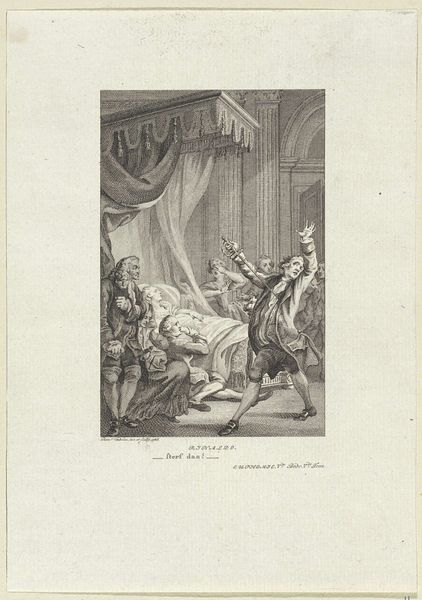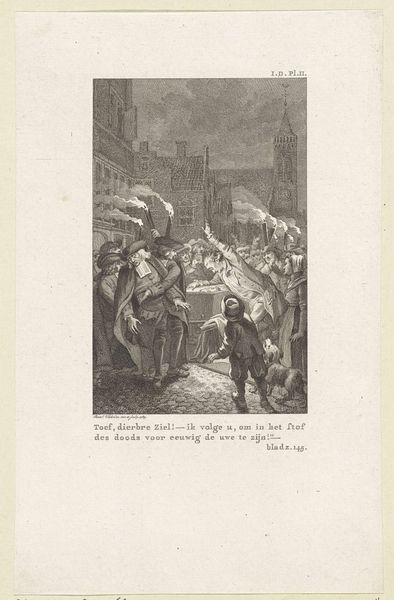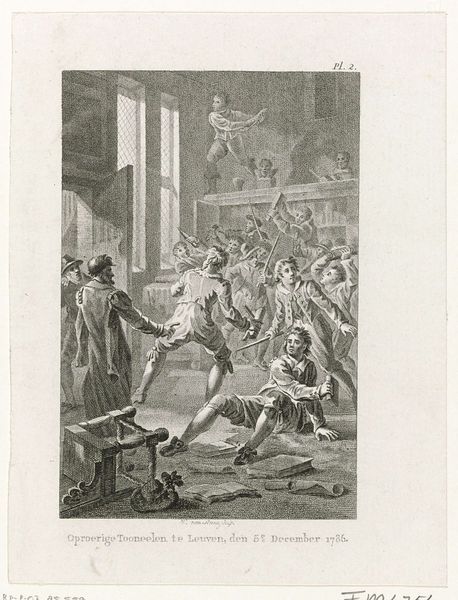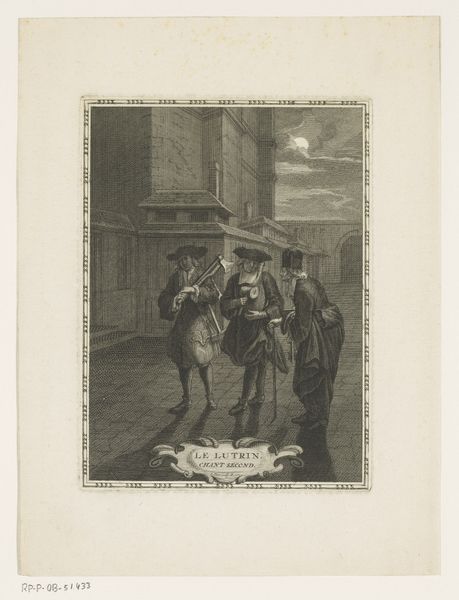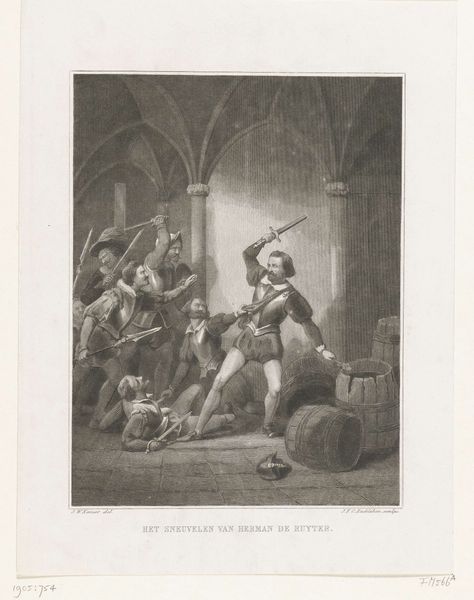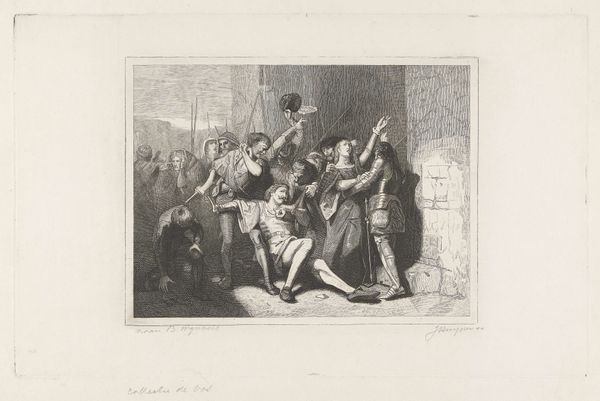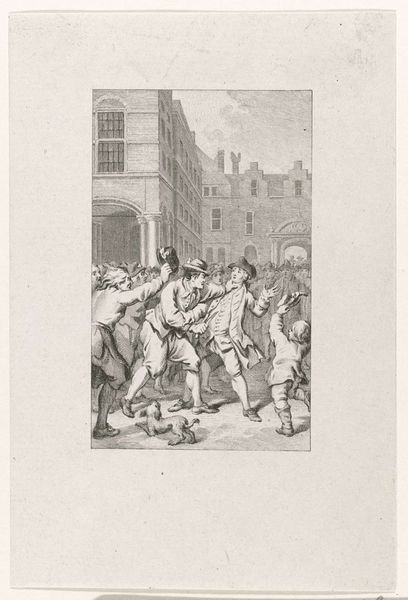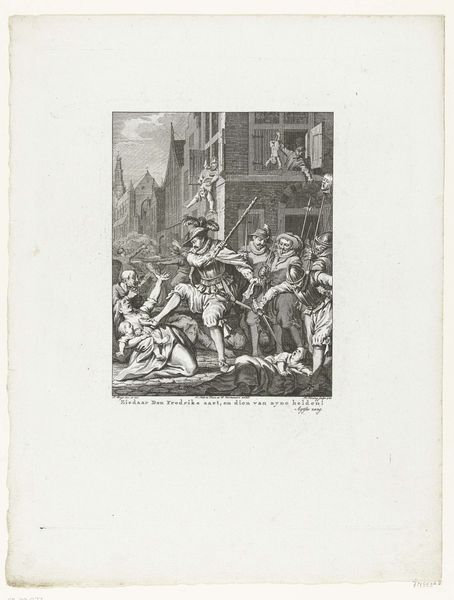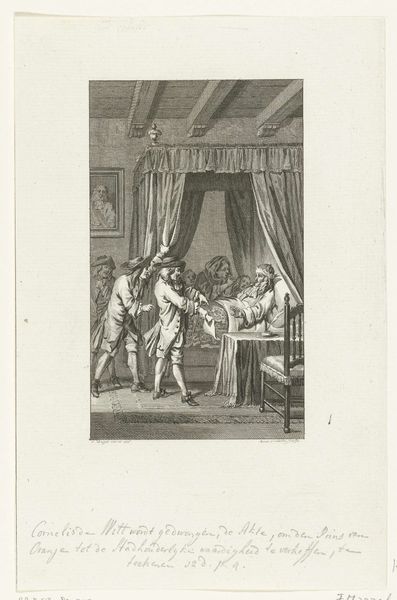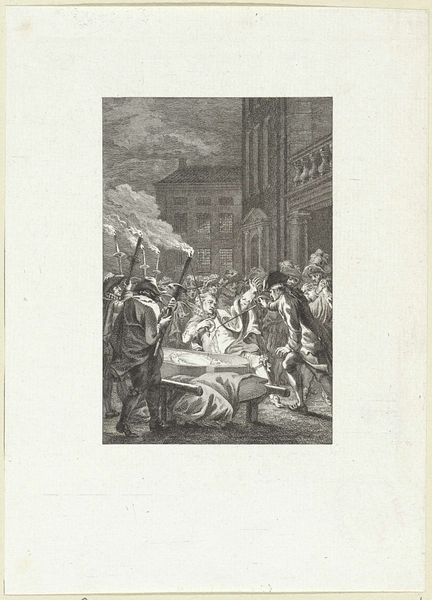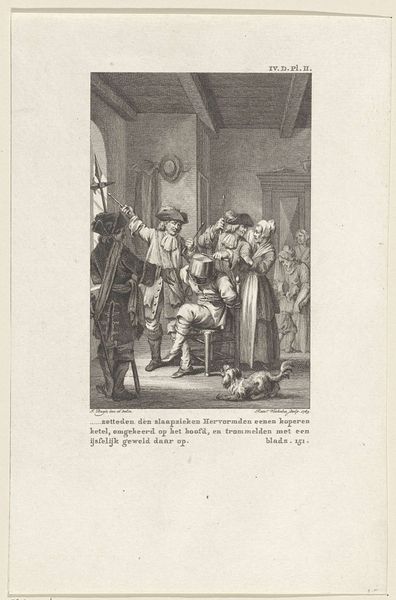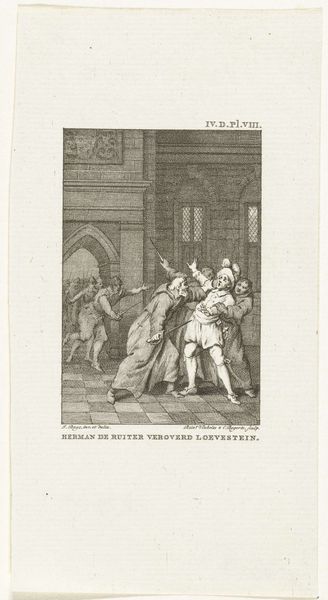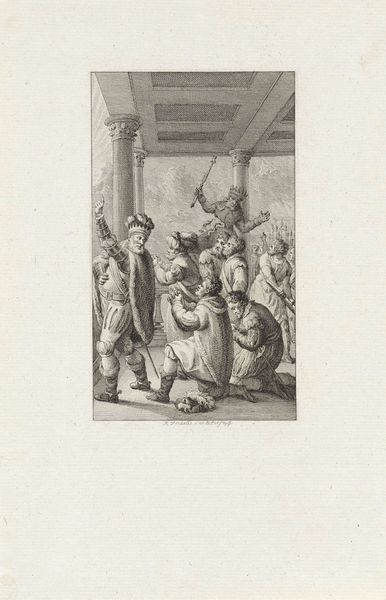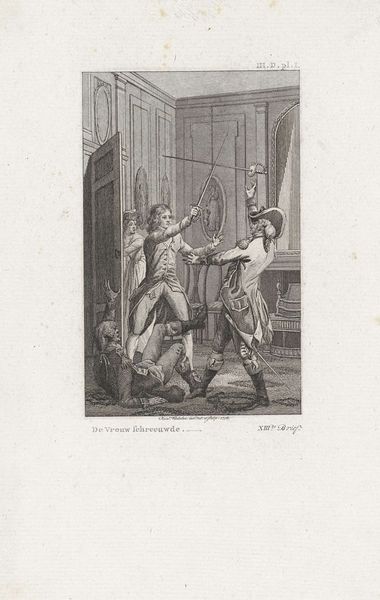
Dimensions: height 254 mm, width 171 mm
Copyright: Rijks Museum: Open Domain
Editor: Here we have "Moord op Floris V, 1296," or "Murder of Floris V, 1296," an engraving by Reinier Vinkeles made sometime between 1751 and 1816. It looks pretty violent! Bodies are sprawling everywhere. What can you tell me about it? Curator: This print is interesting when we consider its production in relation to the means it depicts. It uses engraving, a process requiring significant skill and labor, to portray a scene of extreme social upheaval, the assassination of a count. The high art of printmaking is here deployed to make legible a moment of distinctly *un*ruly, brutal materiality. Editor: That's interesting – so the medium is almost in conflict with the message? The careful crafting versus the chaotic content? Curator: Precisely! Think about the division of labor involved: Vinkeles likely worked under a print publisher, fulfilling a demand for historical imagery. Each line etched into the plate was a conscious decision, yet it culminates in this scene of seemingly unrestrained violence. What does it say about consumption, when considering images of power and violence are translated into commodities? Editor: That makes me think about who was buying these prints? Would they have seen themselves reflected in either Floris or his attackers? Curator: Possibly! Or perhaps they were just consuming a narrative, distanced from the true ramifications of such acts. Notice also how the production of prints allows the widespread dissemination of these visual narratives, shaping historical memory and perhaps even influencing contemporary political thought. Editor: Wow, I didn’t even consider that! So much more than just a violent scene on paper. Curator: Indeed. By analyzing the means of production, materials, and social context, we gain a much richer understanding of the print’s complexities and its place within broader cultural and economic structures.
Comments
No comments
Be the first to comment and join the conversation on the ultimate creative platform.
